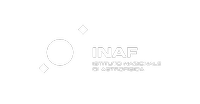Euro VO-DCA
Abstract: The concept of a Virtual Observatory (VObs) is that all the world's astronomical data should feel like it sits on the astronomer's desk top, analysable with a user selected workbench of tools and made available through a standard interface. The VObs concept has the potential to transform and re-structure the way astronomy research is done, and the Virtual Observatory is a world-wide community-based initiative. Euro-VO is a specifially European implementation of this idea that wil produce a unified virtual data and service resource ( a data and service grid) with the ability to perform; complex; data discovery and manipulation tasks across the whole range of astronomical research topics. The EuroVO-DCA proposal aims at creating the Euro-VO Data Centre Alliance. This essential component of the Euro-VO populates the VObs with data produced by European astronomy infrastructures. The EuroVO-DCA project will implement networking of European data centres, disseminate Knolege about the VObstechnical framework, and provide resources to upgrade the data services in a ontrolled and homogeneous fashion. The control and sharing of standards and methods will allow to achieve a productionlevel European-wide e Infrastructure. The project will also prepare the inclusion of the results of theoretical astronomy in the VObs framework. The Euro-VO proposal will produce a rare example of an operational data and service grid, relying on generic infrastructure elements (the high bandwidth communication network and the general framework of the Grid infrastructure) and, wherever required, on discipline-specific interoperability standards.
Dettagli tecnici:

